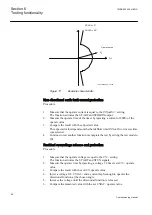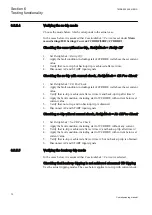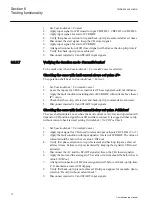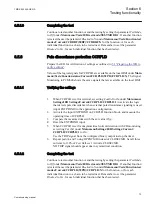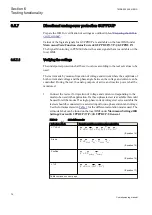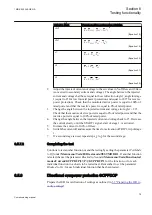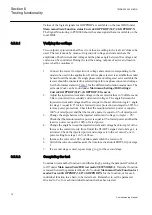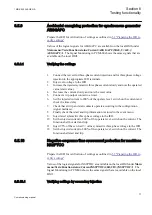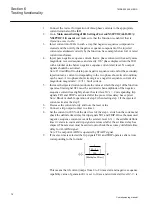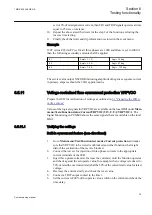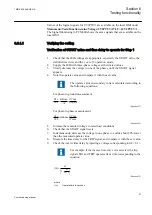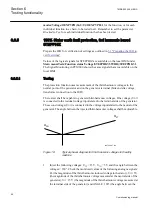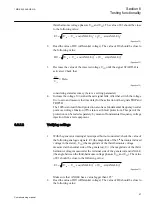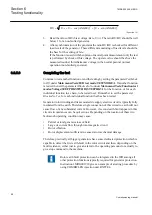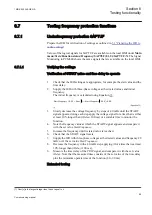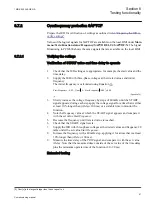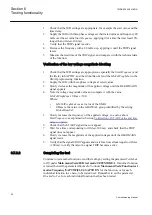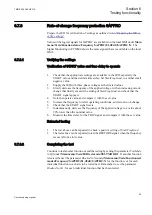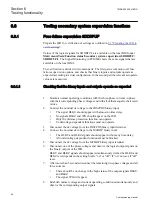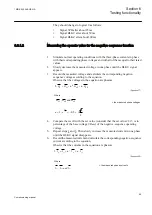
For inverse time curves, check the operate time at a current equal to 110% of the
operate current at
tMin
.
7.
Check that TRIP and START contacts operate according to the configuration
logic.
8.
Finally check that START and TRIP information is stored in the event menu, if
the signals have been configured towards the disturbance recording
functionality.
Information on how to use the event menu is found in the
operators manual.
Overcurrent feature with voltage restraint
1.
Connect the test set for injection of three-phase currents and three-phase
voltages to the appropriate current and voltage terminals of the IED.
2.
Inject the rated voltage during the next steps in order for function to operate
properly.
3.
Inject three-phase current(s) and voltage(s).
Overall check in principle as non-directional overcurrent feature.
4.
Operate value measurement
The relevant voltage restraining value must also be injected from the test set and
the influence on the operate value has to be calculated when testing the operate
value is completed.
5.
Operate time measurement
Definite times may be tested as above. For inverse time characteristics the
START value, to which the overcurrent ratio has to be calculated, is the actual
start value as got with actual restraining from the voltage restraining quantity.
6.5.11.2
Completing the test
Continue to test another function or end the testing by setting the parameter
TestMode
to
Off
under
Main menu/Tests/IED test mode/TESTMODE:1
. If another function
is tested, then set the parameter
Blocked
to
No
under
Main menu/Tests/Function test
modes/Current/VRPVOC(51V,I>U<)/VRPVOC:1
for the function, or for each
individual function in a chain, to be tested next. Remember to set the parameter
Blocked
to
Yes
, for each individual function that has been tested.
6.6
Testing voltage protection functions
6.6.1
Two step undervoltage protection UV2PTUV
Prepare the IED for verification of settings as outlined in
Section 6
1MRK 502 049-UEN A
Testing functionality
80
Commissioning manual

